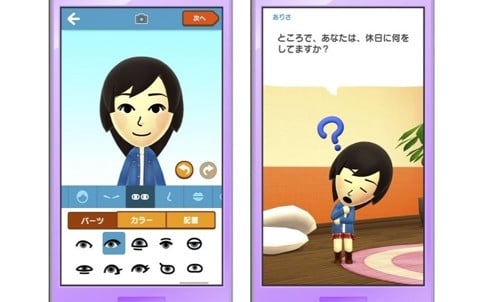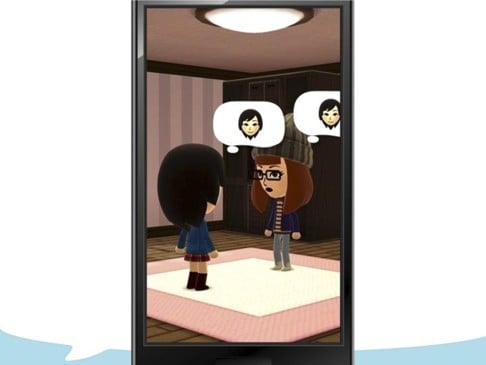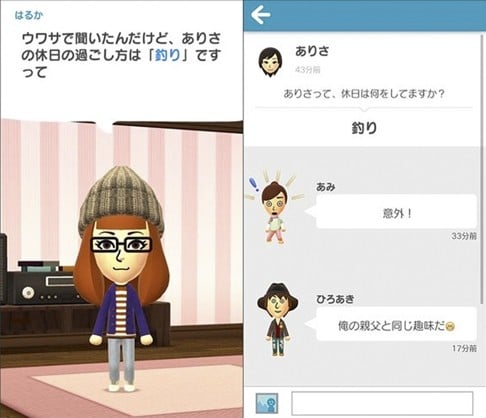
Nintendo to enter the world of smartphone gaming at last
With sales of its consoles in steep decline, the Japanese company has decided to focus on the palm of your hand - and analysts say it could generate billions in revenue
Nintendo is finally making the move into smartphone gaming, figuring it’s better late than never.
The Japanese electronics maker – one of the world’s biggest video game companies but a virtual nonentity in the rapidly growing mobile games industry – unveiled its first title for smartphones in November in Tokyo.
Miitomo, which is set to be released in the spring of next year, is a game that allows players to create avatars to interact with one another socially. The game is the first of five mobile apps Nintendo plans to launch by March 2017, including one that may feature its Mario characters, the company told an investor briefing in Tokyo.
The long-overdue move is an effort to tap into the lucrative and cutthroat world of mobile games that has exploded with the proliferation of smartphones and tablets. Chances are, at one time or another, you were secretly obsessed with Angry Birds or Candy Crush. Even Kim Kardashian scored big when she launched Kim Kardashian: Hollywood last year, with the addictive mobile game raking in $1.6 million in its first five days.
This year marks the first time mobile gaming revenue will exceed console gaming revenue globally, at US$30 billion versus US$27 billion, according to video game market research firm Newzoo.
Nintendo’s popular franchises, which include Super Mario and Zelda, “have the potential to be a billion-dollar business on mobile alone”, says Peter Warman, Newzoo’s co-founder and chief executive.

Nintendo first announced its entry into smartphone games in March, partnering with Tokyo internet firm DeNA.
“Both companies will develop and operate new game apps based on Nintendo’s [intellectual property], including its iconic game characters, for smart devices,” DeNA said in a statement. “The alliance is intended to complement Nintendo’s dedicated video game systems business and extend Nintendo’s reach into the vast market of smart device users worldwide.”
Once the unequivocal leader in video games, Nintendo today is facing threats from several directions.
Its troubles began when casual gamers who enjoyed Nintendo’s family-friendly titles migrated from home and hand-held game consoles to mobile devices, where they found similar games made by rival developers, often available free.
At the same time, consoles such as PlayStation and Xbox started serving hardcore gamers with graphically rich titles, many with heart-pounding violence. Complicating matters for Nintendo was the saturation of the global console market. It didn’t help that consoles never made inroads in China and other regions.

In 2008, no home video game console was more popular than the Nintendo Wii, with 24.19 million units sold. By 2014, only 530,000 of them were sold, fewer than the Xbox One, Xbox 360, PlayStation 3 and PlayStation 4, according to data website Statista.
Nintendo’s latest console, the Wii U, was a dud, selling about 10 million units its first three years. Even its hand-held 3DS has seen sales dip from 12.56 million units in 2011, its launch year, to 9.97 million in 2014.
Meanwhile, sales of Sony’s PlayStation 4, a more powerful gaming console, nearly doubled to 13.92 million units in 2014 from 2013.
By turning its focus to smartphones, Nintendo is relying less on its console business while capitalising on the near ubiquity of smartphones. But unlike Sega, which ditched its Genesis console to focus on games, Nintendo isn’t abandoning consoles.
Ideally, the move into mobile games satisfies long-time customers while enticing new ones to the Nintendo brand, which might in turn lead them to buy Nintendo’s consoles. The company also is working on a secret new platform, code-named NX.
Top global game franchises generate US$1 billion-plus per year. Mario is in the same league and has the potential to generate $500 million-plus on mobile alone
The problem with chasing its target audience to mobile is that the smartphone gaming market has become crowded with competitors, and Nintendo is relegated to playing catch-up.
Warman says the annual growth rate for mobile games in the US has slipped over the past few years from more than 60 per cent to a little more than 10 per cent. The good news for Nintendo is that emerging markets are embracing mobile games.
“Top global game franchises generate US$1 billion-plus per year – examples being Candy Crush, Clash of Clans, Call of Duty and GTA. Mario is in the same league and has the potential to generate $500 million-plus on mobile alone,” he says. “I am very happy that Nintendo has woken up to the real world.”
All of Nintendo’s intellectual property would be eligible for development under the alliance, and only new, original games optimised for smartphones would be created, “rather than porting games created specifically for the Wii U home console or the Nintendo 3DS portable system”, DeNA says.
The companies also said it would build an online membership service for consumers that would be accessible from smart devices, PCs and Nintendo consoles.
Nintendo’s first mobile game will be free to download but include in-app purchases.

Whether the apps lead gamers to buy Nintendo’s consoles is uncertain.
Michael Pachter, an analyst at Wedbush Securities, says the explosion of mobile games has been aided by cheaper cellphone data plans. That lured users away from Nintendo’s hand-held consoles onto smartphones and tablets, creating an expectation that video games would be cheap or free; after all, only a small percentage of people pay for in-game features.
“I don’t know if the free-to-play audience is interested in spending US$150 on a device and another $40 to $50 on a game,” Pachter says.
Nintendo recently reported financial results for the six months that ended on September 30. Sales totalled 204.2 billion yen, or roughly HK$12.87 billion, a 19 per cent increase from the same period last year.
Although it turned an operating profit of 9 billion yen, compared with a loss of 215 million yen in the year-earlier period, that was lower than expected. And its net income fell to 95.46 yen a share from 120.81 yen.
Despite its woes, Nintendo still has many loyal fans. Samantha O’Neill – better known as NintendoFanGirl to her 61,000 YouTube subscribers – says a mobile game will be a welcome addition to the company’s storied line-up.
No matter what the game is, she says: “I’ll buy it out of the gate.”
Los Angeles Times
